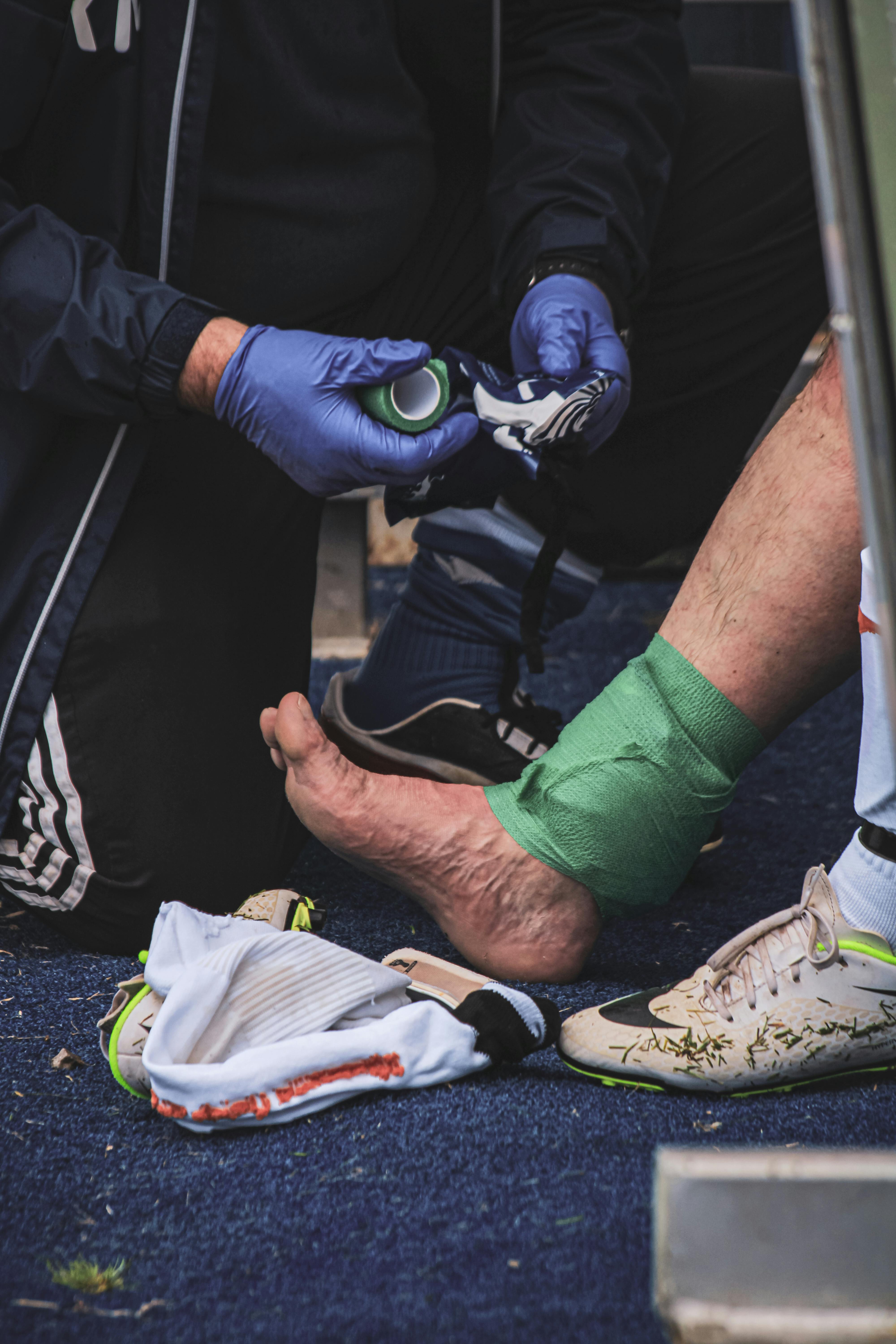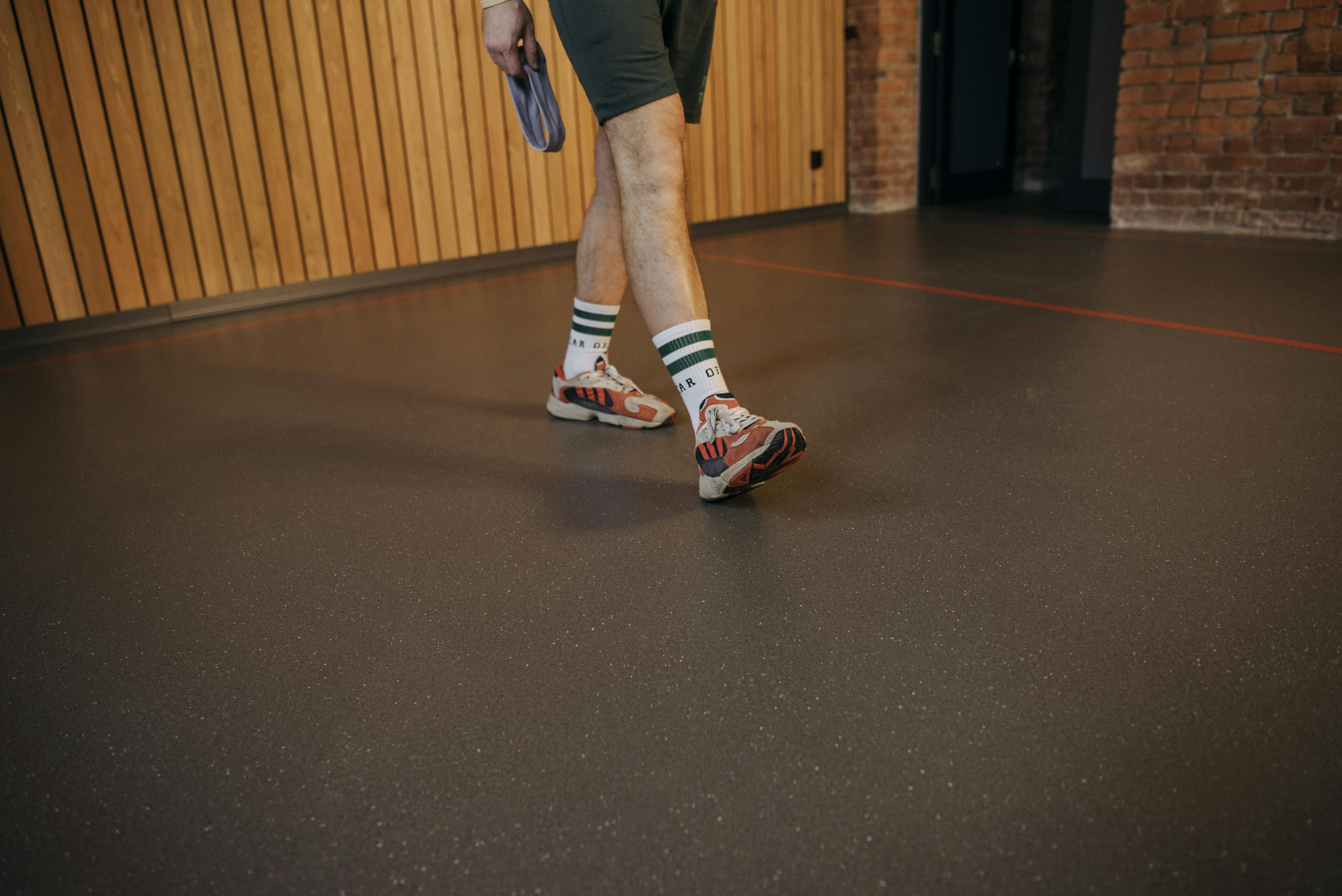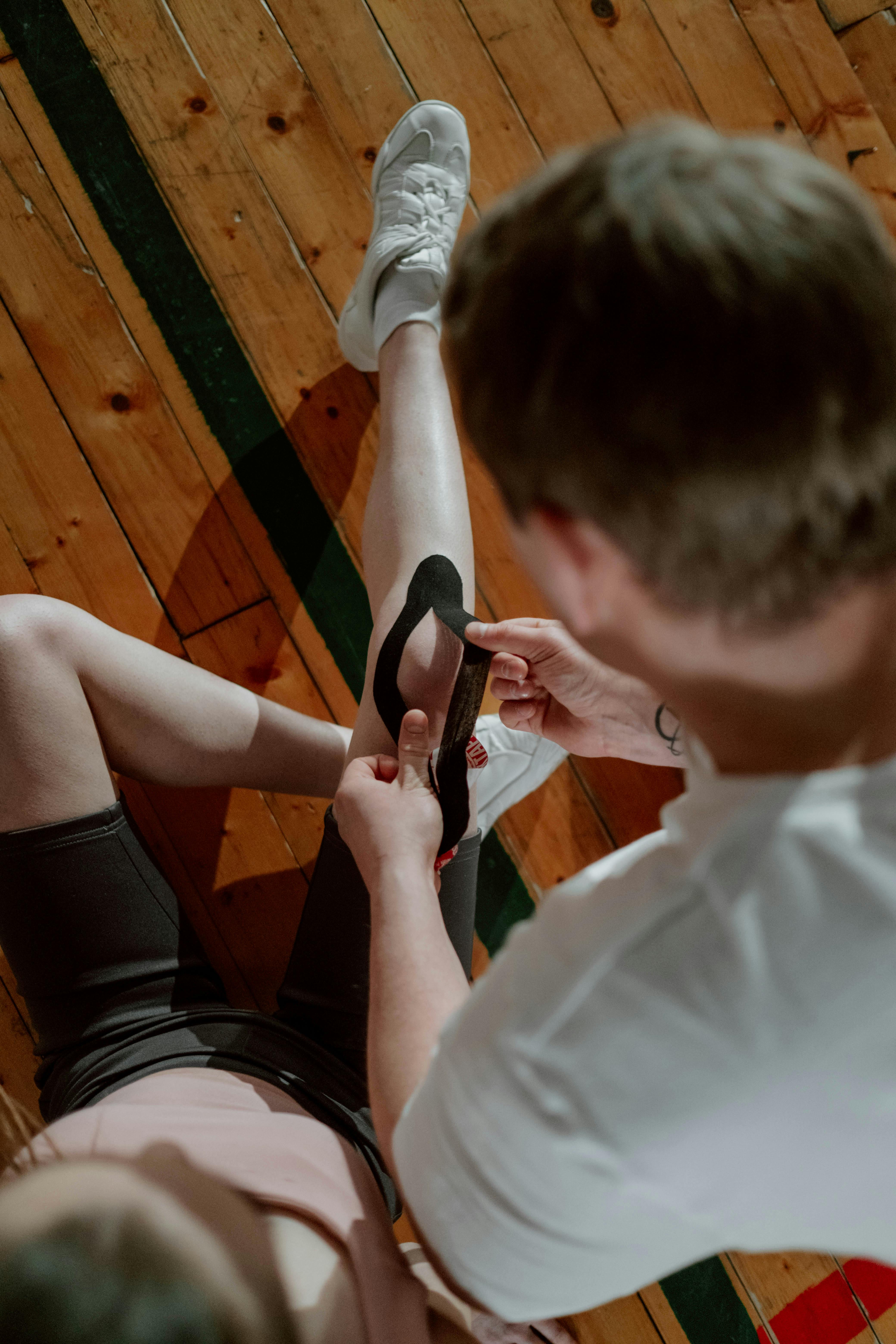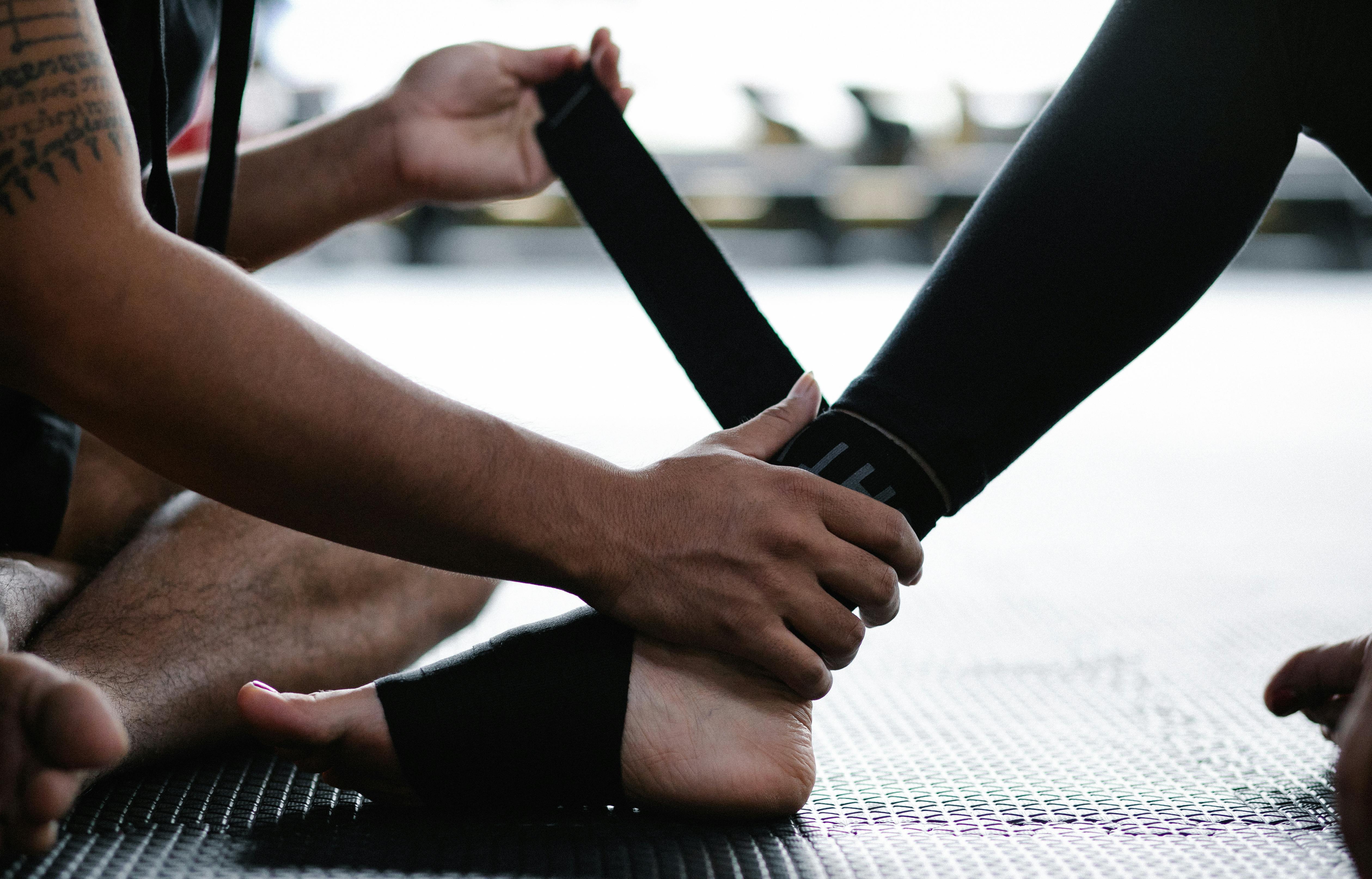Sprained Ankle First Aid: Step by Step Essential Guide

Ankle sprains, though common, often leave people puzzled about the best course of action for recovery. Whether you're on the sports field or navigating everyday terrain, knowing how to administer first aid can make a world of difference.
Every year, countless individuals experience the sudden onset of an ankle sprain—a painful injury that can quickly disrupt daily activities. Whether you're an athlete, an occasional exerciser, or someone who simply took a misstep, understanding how to respond is vital.
The R.I.C.E. method—Rest, Ice, Compression, Elevation—stands as a beacon of relief for ankle sprains, offering immediate care and paving the way for a smoother recovery journey. By familiarizing yourself with this approach, you can provide timely assistance and aid in the healing process.
The R.I.C.E. method
When dealing with an ankle sprain, employing the R.I.C.E. method—Rest, Ice, Compression, Elevation—is key to prompt recovery and pain relief. Let's delve deeper into each step:
- Rest
The first and foremost action is to halt any activity immediately and give the injured ankle the rest it deserves. Continuing to use the affected ankle can exacerbate the injury, hindering the healing process. By resting, you not only prevent further harm but also kickstart the body's natural recovery mechanisms.
- Ice
Swift application of ice to the injured area is crucial in reducing swelling and alleviating pain. Begin icing the ankle as soon as possible post-injury using a cold pack or a makeshift ice pack wrapped in a cloth. Aim for 15-20 minute intervals of icing every two to three hours within the first 48-72 hours. This helps constrict blood vessels and diminish inflammation, promoting faster healing.
- Compression
Wrapping the injured ankle with an elastic bandage provides essential support, controlling swelling, and stabilizing the joint. However, it's vital to strike the right balance—ensure the bandage is snug enough to offer support but not overly tight to impede blood circulation. If you notice tingling sensations or discoloration in the toes, loosen the bandage immediately.
- Elevation:
Elevating the injured ankle above heart level whenever feasible is instrumental in minimizing swelling. This can be accomplished by propping the leg up on pillows or a raised surface. Elevating the ankle complements the other facets of the R.I.C.E. method, facilitating optimal recovery.
By adhering to the R.I.C.E. method diligently, you provide your sprained ankle with the best possible care, expediting healing, and ensuring a smoother rehabilitation journey. Remember, swift and proper intervention can make all the difference in the recovery process.
Common First aid Mistakes in Ankle Sprain Care
While the R.I.C.E. method provides a solid framework for managing ankle sprains, it's essential to steer clear of common pitfalls. Let's explore these pitfalls and how to avoid them:
1. Avoid Heat in the Initial 48 Hours:
Applying heat to the injured ankle during the first 48 hours can exacerbate swelling and prolong recovery. Heat dilates blood vessels, increasing blood flow to the area and potentially worsening inflammation. Stick to cold therapy with ice packs or cold compresses to effectively reduce swelling and alleviate pain.
2. Steer Clear of Straining Activities:
Engaging in activities that strain the injured ankle, such as walking or standing for extended periods, can impede the healing process and lead to further damage. Opt for restorative activities that minimize stress on the ankle, allowing it to heal properly. Consider using crutches or a supportive brace to offload weight and reduce strain on the injured joint.
3. Mindful Compression Application:
While compression with an elastic bandage can aid in controlling swelling and providing stability, it's crucial to apply it with caution. Avoid wrapping the bandage too tightly, as this can impede circulation and exacerbate discomfort. Opt for a snug yet comfortable fit, ensuring adequate support without compromising blood flow to the affected area.
By steering clear of these common pitfalls and adhering to best practices in ankle sprain care, you can promote optimal healing and ensure a smoother recovery journey. Remember, prioritizing rest, cold therapy, and gentle support is key to facilitating a speedy and successful recovery.
Seek Medical Attention
While the R.I.C.E. method serves as a cornerstone for managing minor ankle sprains, it's crucial to recognize when professional medical intervention is necessary. Here's why:
1. Recognizing Red Flags:
If you encounter severe pain, find it challenging to bear weight on the ankle, or observe pronounced swelling and bruising, it's imperative to seek prompt medical attention. These signs may indicate a more severe injury, such as a fracture, that requires immediate evaluation and treatment by a healthcare professional.
2. Importance of Proper Diagnosis:
Consulting a healthcare provider enables them to conduct a thorough assessment, provide an accurate diagnosis, and rule out any underlying or more serious injuries. This ensures appropriate management and prevents potential complications that could arise from untreated or misdiagnosed conditions.
3. Tailored Treatment Plan:
A healthcare professional can devise a personalized treatment plan tailored to your specific injury, considering factors such as the severity of the sprain, your activity level, and any underlying health conditions. This may involve additional interventions such as physical therapy, bracing, or in some cases, surgical intervention.
4. Prioritizing Timely Intervention:
While ankle sprains are common, timely and appropriate first aid can profoundly impact the healing process and the likelihood of a full recovery. By promptly addressing your injury and seeking professional help as needed, you're taking proactive steps to ensure optimal outcomes and a smoother return to normal activities.
While the R.I.C.E. method lays the foundation for initial ankle sprain management, knowing when to seek medical attention is equally crucial. By being vigilant about red flags, obtaining a proper diagnosis, and following a tailored treatment plan, you're actively promoting your recovery and paving the way for a stronger, more resilient future.
Bottom Line
In the first aid for ankle sprains, remember: R.I.C.E. is nice! By Resting, Icing, Compressing, and Elevating, you're giving your ankle the TLC it needs to bounce back. So, whether you're a pro athlete or just out for a stroll, these simple steps pave the way for a speedy recovery and a happier, healthier you!



